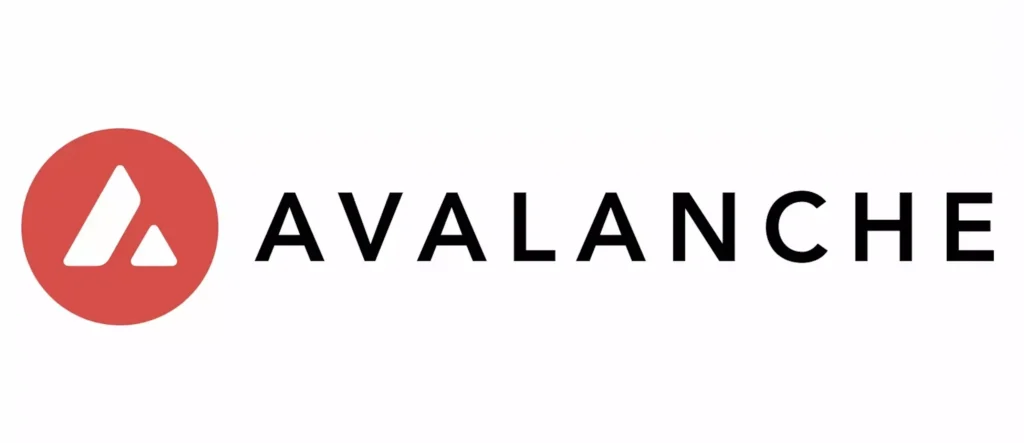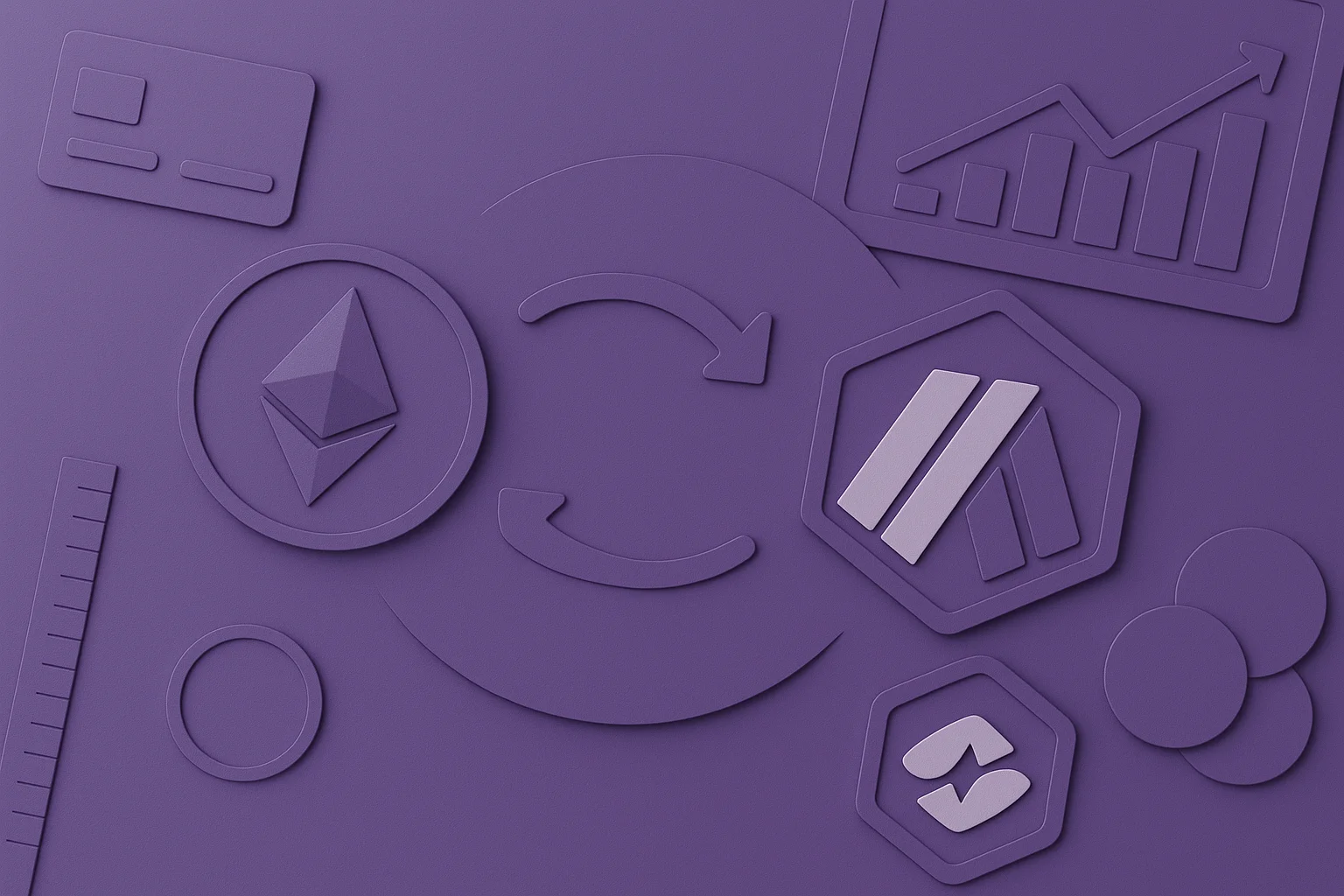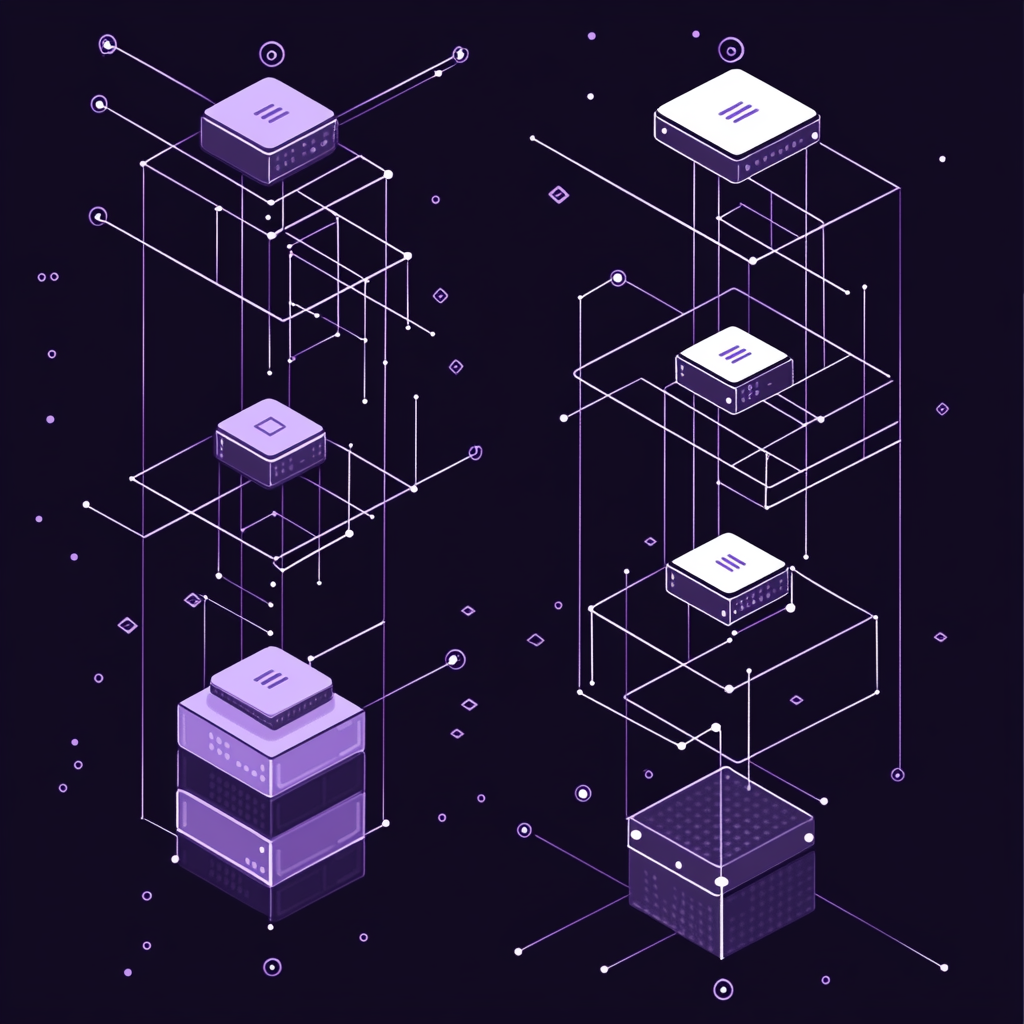Understanding Layer 1 Blockchains: A Complete Guide
Are you wondering what is a Layer 1 blockchain? Think about building a house. You need a solid foundation before you add walls, windows, or a roof. Without it, nothing else can stand. Blockchain works in much the same way. At the very base of this technology lies Layer 1, a structural foundation that supports […]
Are you wondering what is a Layer 1 blockchain? Think about building a house. You need a solid foundation before you add walls, windows, or a roof. Without it, nothing else can stand. Blockchain works in much the same way. At the very base of this technology lies Layer 1, a structural foundation that supports everything above it.
Layer 1 is where the rules are written. The layer decides how transactions are processed, how secure the network is, and how information flows. Just like you wouldn’t see the foundation of a house when you walk inside, you might not think about Layer 1 when using cryptocurrencies or hearing about blockchain technology.
Yet, it’s always there, making sure the entire system functions. Learning the concept of Layer 1 is like discovering the blueprint of blockchain technology. It allows people to see the bigger picture and better appreciate the innovations it drives.
Let’s dive deeper into how this foundational layer influences the digital world.
What Is Layer 1 Crypto?
Layer 1 is the core of blockchain technology, acting as the main layer where everything happens. The blockchain network is responsible for tracking transactions and securely storing data. It ensures the system operates in a decentralized and transparent way.
So, one of the roles of Layer 1 is to guarantee that users can process transactions directly on the network without needing third parties. When someone sends cryptocurrency or performs an action on a blockchain, Layer 1 is where that activity is verified and permanently recorded on a public ledger. This decentralized approach creates trust in the system, as no single entity controls the data.
Unlike additional layers or scaling solutions built on top, Layer 1 operates independently. It sets the foundation for the network’s work while allowing other innovations, like new applications or protocols, to be developed in a secure environment. Everything in blockchain starts with this layer, which is fundamental to the system’s stability and usability.
By handling all the core functions of a blockchain network, Layer 1 confirms that the system runs smoothly and provides the transparency and security users expect.
Layer 1 Key Components
Layer 1 blockchains are designed with specific components that enable them to operate smoothly and adapt to growing demands. These elements are what give Layer 1 its ability to manage transactions securely, maintain decentralization, and support additional features like smart contracts.
By breaking down these components, we can better understand how they ensure blockchain networks remain functional and efficient.
1. Consensus Mechanisms
Consensus mechanisms are really important for Layer 1. They validate actions and maintain trust among users. These mechanisms guarantee everyone agrees on the blockchain’s current state and provide fairness and security.
- Proof of Work (PoW): Used by the Bitcoin blockchain, PoW requires participants (miners) to solve complex puzzles to confirm transactions. While secure, it can be slower and energy-intensive.
- Proof of Stake (PoS): PoS relies on validators who “stake” their cryptocurrency to validate transactions, offering a more energy-efficient alternative to PoW.
- Delegated Proof of Stake (DPoS): Allows users to vote for delegates who handle transaction validation, increasing speed while maintaining fairness.
2. Transaction Processing
The ability to process transactions quickly and securely is a core function of Layer 1. Involves:
- Recording all actions on the blockchain in a transparent and tamper-proof manner.
- Using cryptographic techniques, like hashing, to ensure transaction accuracy.
- Overcoming challenges like network congestion can slow down transaction speeds during high-traffic periods.
Some Layer 1 blockchains incorporate techniques such as adjusting block sizes or refining how transactions are grouped to improve performance.
3. Security
Layer 1 blockchains prioritize robust security to protect data and prevent unauthorized access. Include:
- Cryptographic Algorithms: Hash functions and digital signatures confirm data remains secure and unchangeable.
- Immutability: Once transactions are recorded, they cannot be altered, fostering transparency and trust.
- Decentralized Infrastructure: Distributing data across multiple nodes prevents single points of failure.
These measures make Layer 1 suitable for use cases like digital payments and identity management.
4. Smart Contract Functionality
Smart or self-executing contracts are a defining feature of many Layer 1 blockchains, such as Ethereum. They allow users to automate agreements without relying on intermediaries.
- Use Cases: Smart contracts support decentralized applications, including DeFi platforms, NFT marketplaces, and supply chain solutions.
- Efficiency: Smart contracts reduce manual errors and improve transparency by automating processes.
5. Native Assets
Each Layer 1 blockchain has its native cryptocurrency, which serves multiple purposes:
- Paying transaction fees for network activities.
- Rewarding validators or miners for their contributions.
- Facilitating interactions within the network’s ecosystem.
For example:
- Bitcoin uses BTC as a store of value and a medium of exchange.
- Ethereum’s ETH powers smart contracts and pays gas fees.
6. Scalability Techniques
Layer 1 blockchains face limitations when demand increases, often resulting in slower transaction speeds and higher costs. To address these challenges, they employ techniques like:
- Sharding: Splits the blockchain into smaller, manageable pieces to increase throughput.
- State Channels: Enables off-chain transactions that settle on-chain, reducing congestion.
- Optimized Protocols: Adjustments to existing frameworks to enhance scalability without compromising security.
3 Layer-1 Blockchain Examples
Some blockchains are prime examples of how the foundational layer supports secure and decentralized networks. These Layer 1 blockchains highlight the core principles of blockchain, such as processing transactions and ensuring security and scalability through their unique designs and applications.
Let’s look at how Layer 1 functions in three standout networks.
1. Bitcoin (BTC)

Bitcoin’s Layer 1 blockchain introduced the world to decentralized digital currency. Miners validate and add transactions to the blockchain using the Proof of Work (PoW) consensus mechanism, ensuring every transaction is secure and permanently recorded.
Bitcoin’s Layer 1 handles the direct processing of transactions, maintaining a secure ledger without relying on external layers. Its design focuses purely on value transfer, making it a straightforward yet powerful example of Layer 1 technology.
2. Ethereum (ETH)

Ethereum’s Layer 1 blockchain took blockchain beyond currency by enabling smart contracts and decentralized applications (dApps). Transitioning from PoW to a consensus algorithm called Proof of Stake (PoS) with Ethereum 2.0 has improved scalability and reduced energy consumption.
Ethereum’s foundational layer supports financial transactions and advanced functionalities like automated contracts and dApps, forming the basis for innovations like DeFi and NFTs.
3. Solana (SOL)

Solana addresses blockchain scalability issues by combining Proof of History (PoH) with Proof of Stake to handle thousands of transactions per second. This unique approach makes it one of the fastest blockchains in operation today.
Solana’s Layer 1 guarantees fast and efficient transaction processing, supporting applications that require speed, such as gaming and high-frequency trading.
3 Layer 1 Alternative in Crypto
Not all Layer 1 blockchains are as famous as Bitcoin or Ethereum, but many bring unique innovations. These alternatives demonstrate how Layer 1 can support various use cases and drive blockchain technology forward.
1. Avalanche (AVAX)

Avalanche is a Layer 1 blockchain designed for high performance and scalability. It uses a unique consensus algorithm called Avalanche Consensus, which allows the network to achieve near-instant transaction finality and handle thousands of transactions per second.
What makes Avalanche stand out is its use of subnets—customizable blockchain networks that operate under Avalanche’s Layer 1 infrastructure. These subnets enable developers to create tailored solutions while benefiting from the security and efficiency of the main Avalanche network.
2. Cardano (ADA)

Cardano approaches blockchain development with a strong focus on research. It uses a Proof of Stake system called Ouroboros. This method helps ensure sustainability, scalability, and interoperability. Because of these features, many developers choose Cardano for long-term projects.
The Layer 1 structure of Cardano is modular. This means upgrades can happen without disrupting the network. It’s also known for its energy efficiency and commitment to security. These qualities make Cardano a competitive player in the blockchain space.
3. Algorand (ALGO)

Algorand is a Layer 1 blockchain that prioritizes speed, efficiency, and minimal environmental impact. It achieves this through its Pure Proof of Stake (PPoS) mechanism, which ensures decentralization while supporting fast and cost-effective transactions.
Algorand’s Layer 1 design suits financial applications, such as cross-border payments and tokenized assets. Its low transaction fees and scalability make it a go-to platform for developers building blockchain solutions for traditional finance.
FAQ
What is the difference between Layer 1 and Layer 2 in blockchain?
Layer 1 is the foundational blockchain network that processes and secures all transactions. It is often the only layer needed to establish the core functionalities. Layer 2 is built on top of Layer 1 to improve scalability and transaction speed, often using off-chain solutions.
How many layers are there in blockchain technology?
Blockchain generally includes Layer 1 (base layer), Layer 2 (scaling solutions), and sometimes Layer 0 (infrastructure supporting multiple blockchains).
What does Layer 0 mean in blockchain?
Layer 0 refers to the infrastructure that connects and supports multiple Layer 1 blockchains, enabling interoperability and communication.
Is Layer 1 more secure than Layer 2?
Layer 1 typically provides the base security for blockchain networks, while Layer 2 depends on Layer 1 for validation and security.
Can a blockchain operate without a Layer 2?
Yes, but it may face scalability challenges. Layer 2 solutions complement Layer 1 by enhancing transaction speeds and reducing costs.
Final Thoughts
We hope we’ve answered the most essential question regarding what is a layer 1 blockchain. Blockchain technology is constantly growing, and Layer 1 is at the heart of it all. Every Layer 1 blockchain has something unique to offer. In addition, innovations like Layer 2 and Layer 0 are stepping in to solve challenges and open up even more possibilities.
Whether you’re curious about Bitcoin, Ethereum, or newer options like Avalanche, learning about these layers gives you a clearer view of how blockchain shapes the future. It’s an exciting space to explore!



